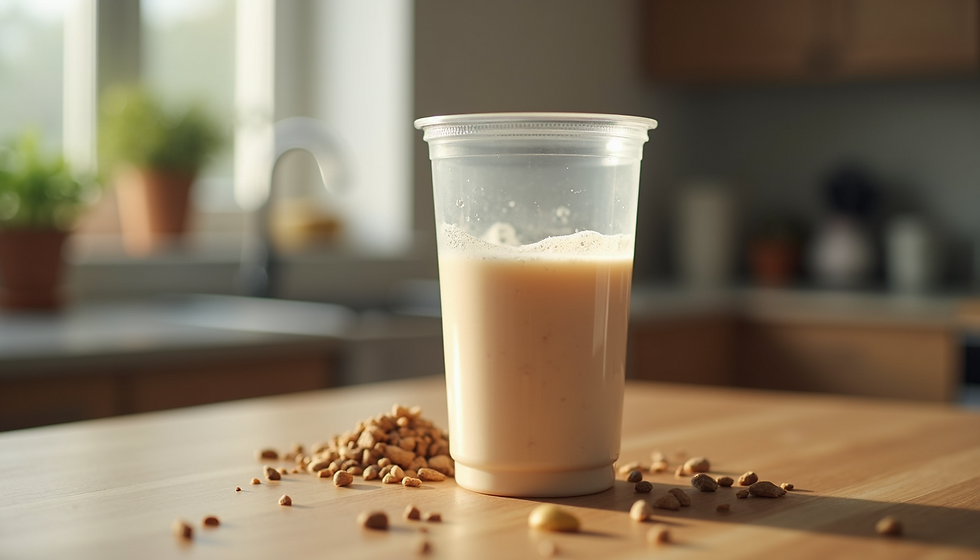Unlocking Optimal Recovery Strategies: What Research Reveals About Post-Race and Post-Workout Restoration
- Sam Maltby
- 16 hours ago
- 4 min read
Crossing the finish line or completing a challenging workout is a rewarding experience, but it's just the beginning of your journey. Recovery is a crucial phase for every athlete, whether you're a casual jogger or a seasoned marathoner. Good recovery helps prevent injuries and boosts your overall performance. This blog post explores effective, research-backed recovery strategies to ensure your body bounces back strong and is ready for your next challenge.
Understanding the Importance of Recovery
Recovery is not just a waiting period after exercise; it's a key part of any training routine. When you push your body hard, your muscles, connective tissues, and energy stores are stressed. Without a systematic approach to recovery, these elements can remain depleted, affecting your future performance.
For instance, a study found that athletes who included proper recovery methods experienced a 20% improvement in their performance compared to those who neglected recovery. Understanding how to recover effectively can be the difference between improved results and potential injuries.
Hydration: Replenishing Lost Fluids
Rehydrating after a race or workout is one of the essential first steps of recovery. During intense physical activity, you can lose water and electrolytes through sweat. 60% of athletes report feeling fatigued due to improper hydration post-exercise.
To rehydrate, aim to drink 16 to 24 ounces of fluid for every pound lost during activity. Water may not be enough. Electrolyte drinks are vital for restoring lost sodium, potassium, and magnesium, especially after long sessions. For example, beverages like coconut water or specialized sports drinks can enhance your recovery by quickly replacing lost fluids and electrolytes.
Nutrition: Fueling Recovery
After exercising, your muscles crave nutrients to begin the healing process. To optimize recovery, focus on a balanced intake of carbohydrates and proteins right after your workout. Research shows that consuming carbohydrates within 30 minutes post-exercise is critical for replenishing glycogen stores, while protein aids muscle repair.
A good guideline is to consume roughly 0.5 to 0.7 grams of carbohydrates and 0.2 to 0.4 grams of protein per kilogram of body weight soon after exercising. For instance, a smoothie made with banana, Greek yogurt, and a scoop of protein powder can offer both carbs and protein, promoting quick recovery.
Active Recovery: The Power of Light Exercise
Engaging in light activities post-exercise can significantly benefit recovery. Walking, cycling, or light yoga can improve blood circulation, reduce muscle soreness, and help eliminate metabolic waste.
A study found that active recovery methods can lower muscle soreness by up to 30% compared to complete rest. These gentle exercises maintain mobility and provide a mental boost, allowing you to reflect on your hard work without overwhelming your body.
Sleep: The Unsung Hero
Quality sleep is a powerhouse for recovery, and its importance cannot be stressed enough. It helps with muscle repair and energy restoration. Studies indicate that athletes who get sufficient sleep enjoy 20-30% better performance than those who don’t.
Aim for 7 to 9 hours of quality sleep every night. To enhance sleep quality, create an environment conducive to rest: limit screen time before bed, keep your bedroom dark and quiet, and establish a consistent sleep routine to signal your body when it’s time to wind down.
Compression Therapy: Supporting Muscles
Compression therapy is another research-backed strategy. Wearing compression garments can reduce muscle soreness and swelling after exercise. These snug-fitting clothes help improve blood flow and speed up recovery times.
While experiences vary, many athletes report significantly less soreness and fatigue when using compression gear after workouts. They are beneficial after long races or strenuous training sessions when muscle recovery is crucial.
Cold Water Therapy: A Refreshing Approach
Cold water immersion, such as ice baths, is a popular recovery technique among athletes. Research shows that 70% of athletes who use cold water therapy report decreased muscle soreness and inflammation, resulting in quicker recovery.
After intense workouts, try immersing your body in cold water for 10 to 20 minutes. While it may seem uncomfortable, the numbness can alleviate some discomfort and help you return to your training routine faster.
Mindfulness and Relaxation Techniques
Don't overlook the mental aspect of recovery. High-intensity workouts can stress you out as much as they physically challenge you. Practices like meditation and deep breathing can significantly aid in mental recovery.
A study found that integrating mindfulness techniques can decrease stress levels and improve physical recovery. Spending just a few minutes a day practicing mindfulness can help you feel rejuvenated and better prepared for your next workout or race.
Final Thoughts
The most effective recovery strategies following a race or intense workout are research-supported and should cater to your needs. Prioritize hydration, nutrition, active recovery, quality sleep, and consider additional methods like compression therapy, cold water immersion, and mindfulness.
By investing in recovery, you not only boost your performance but also promote lasting health in your fitness journey. Focus on these strategies, and you'll be well-equipped to take on future challenges with renewed strength and energy. Remember, your body benefits from recovery as much as it does from training. Embrace these techniques to reach your full potential!





Comments